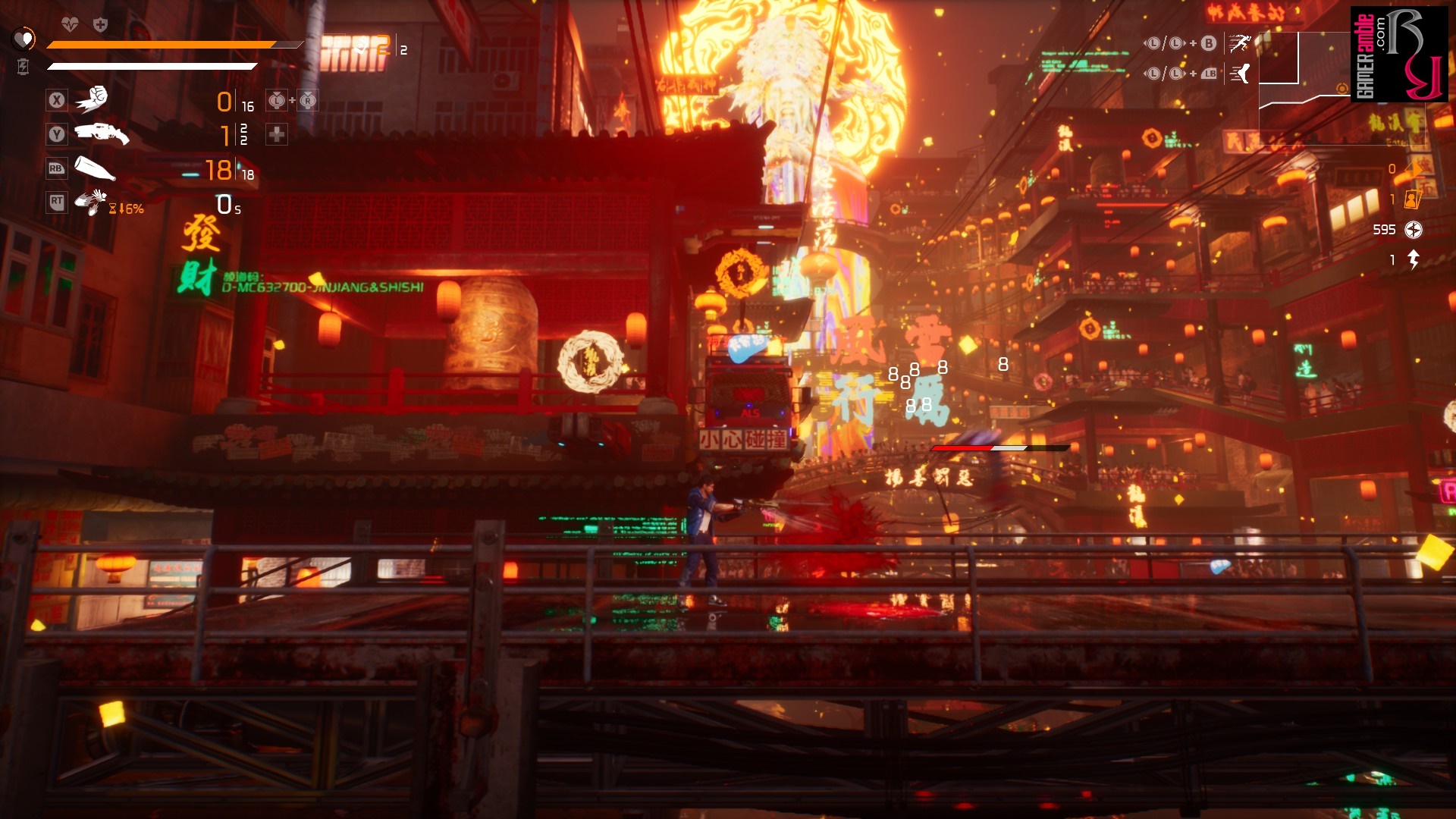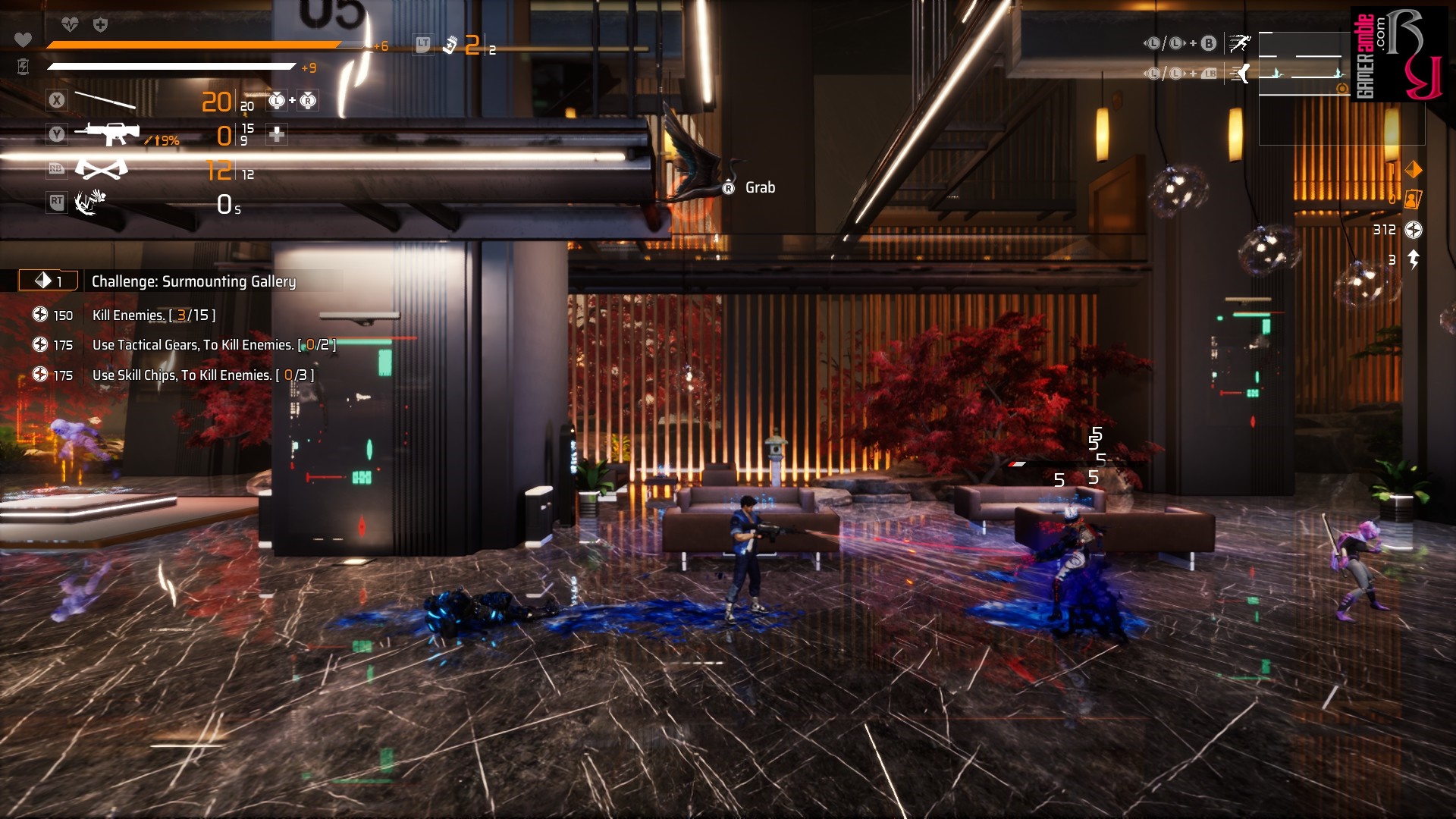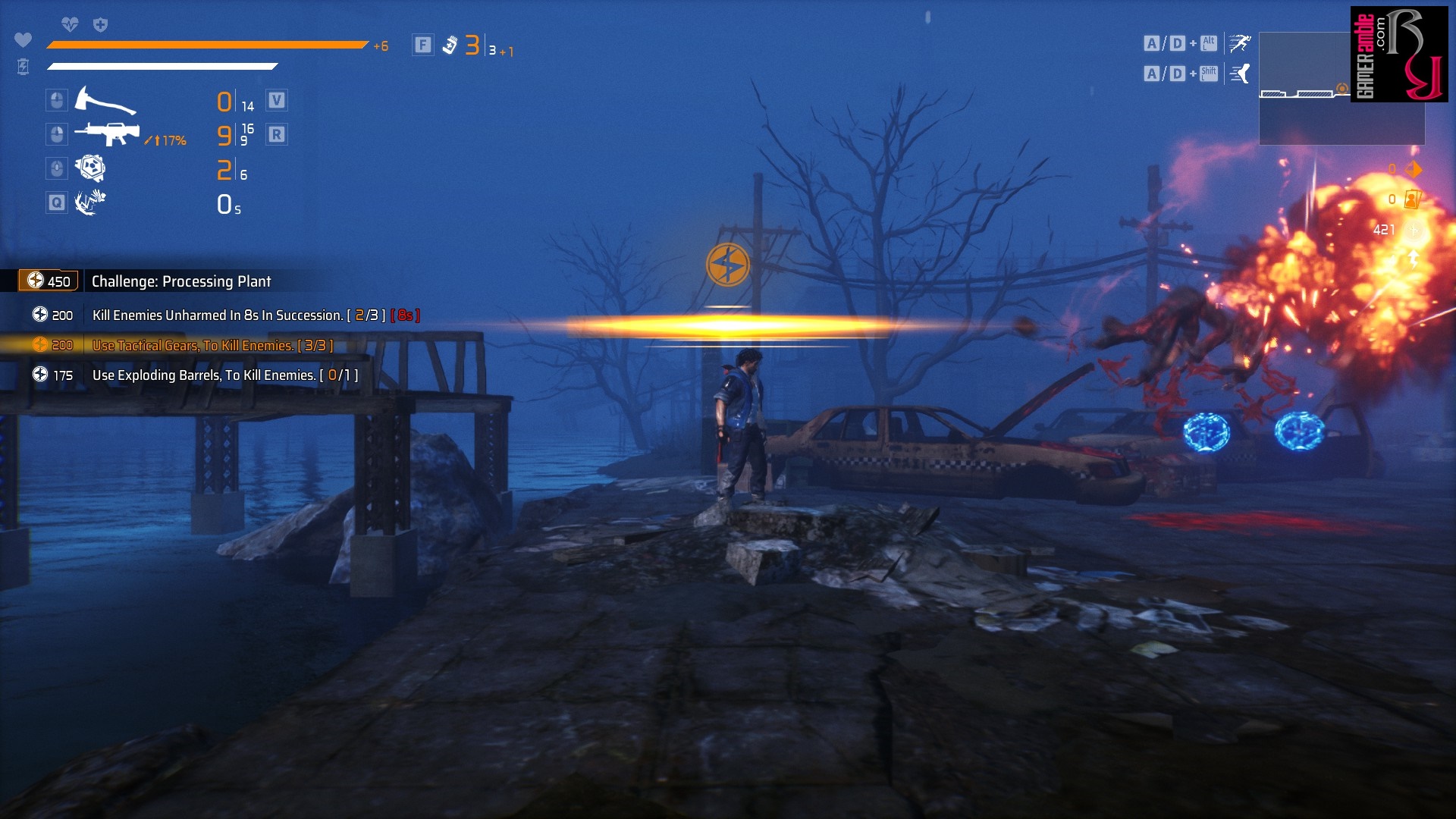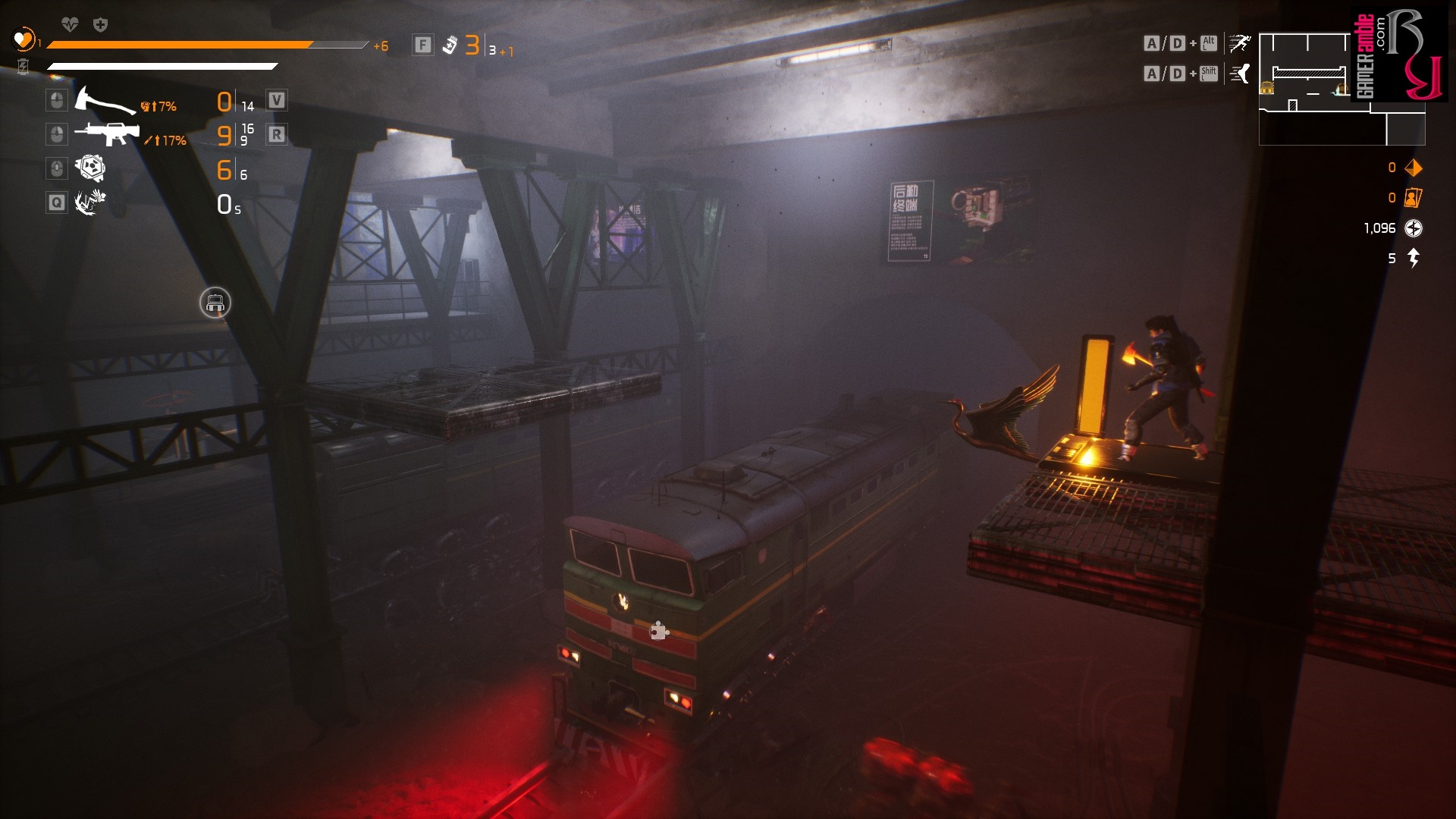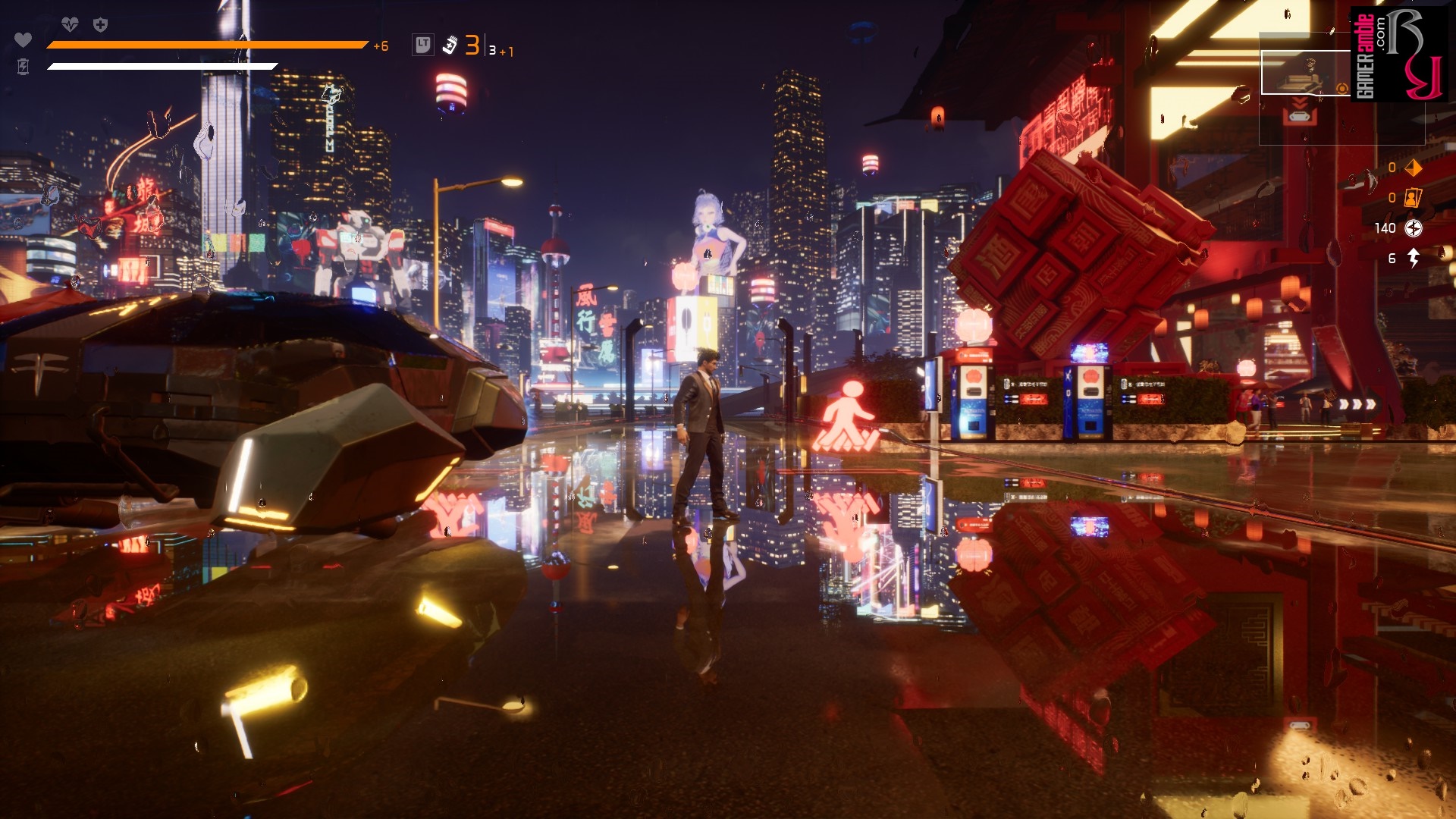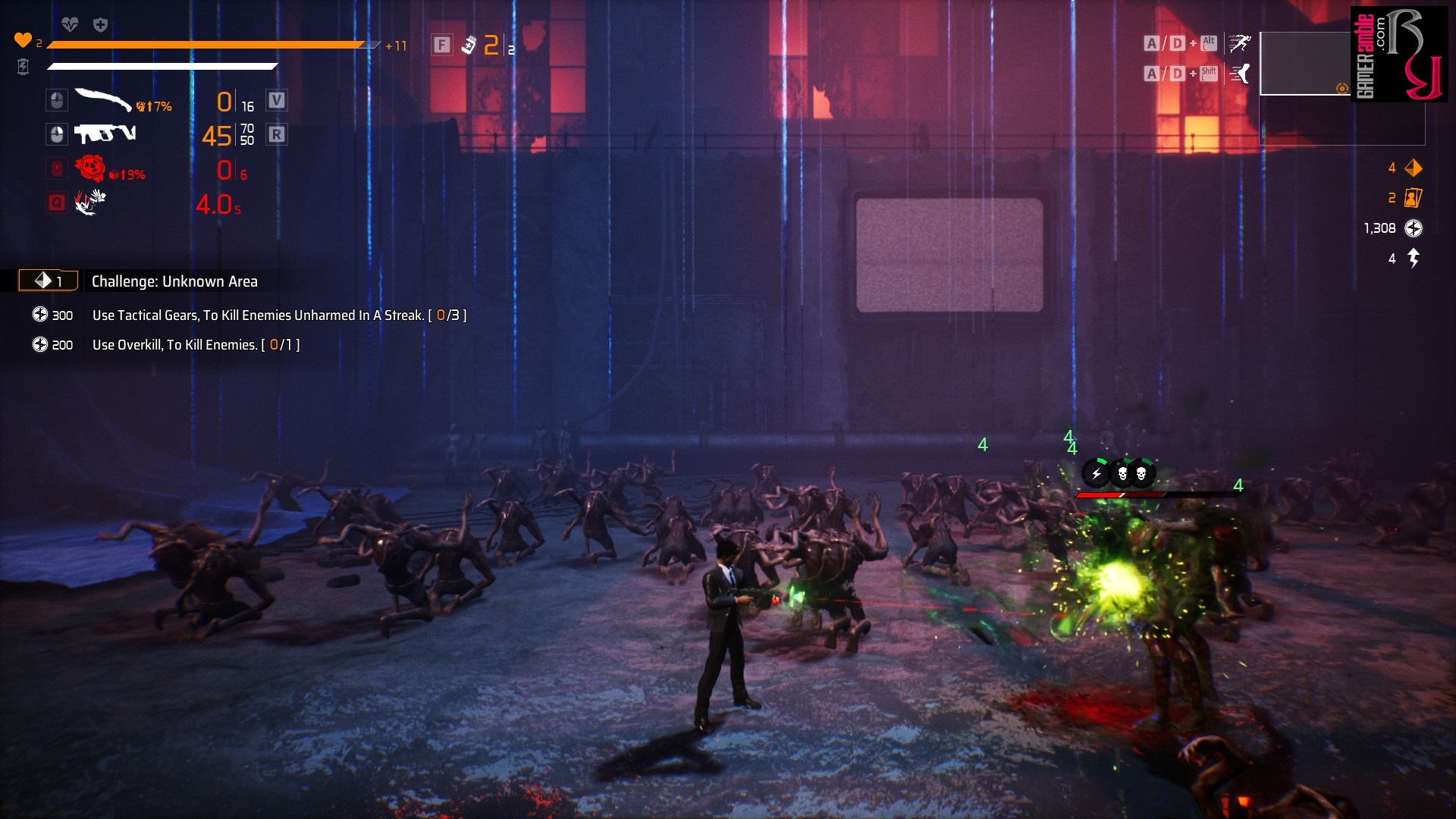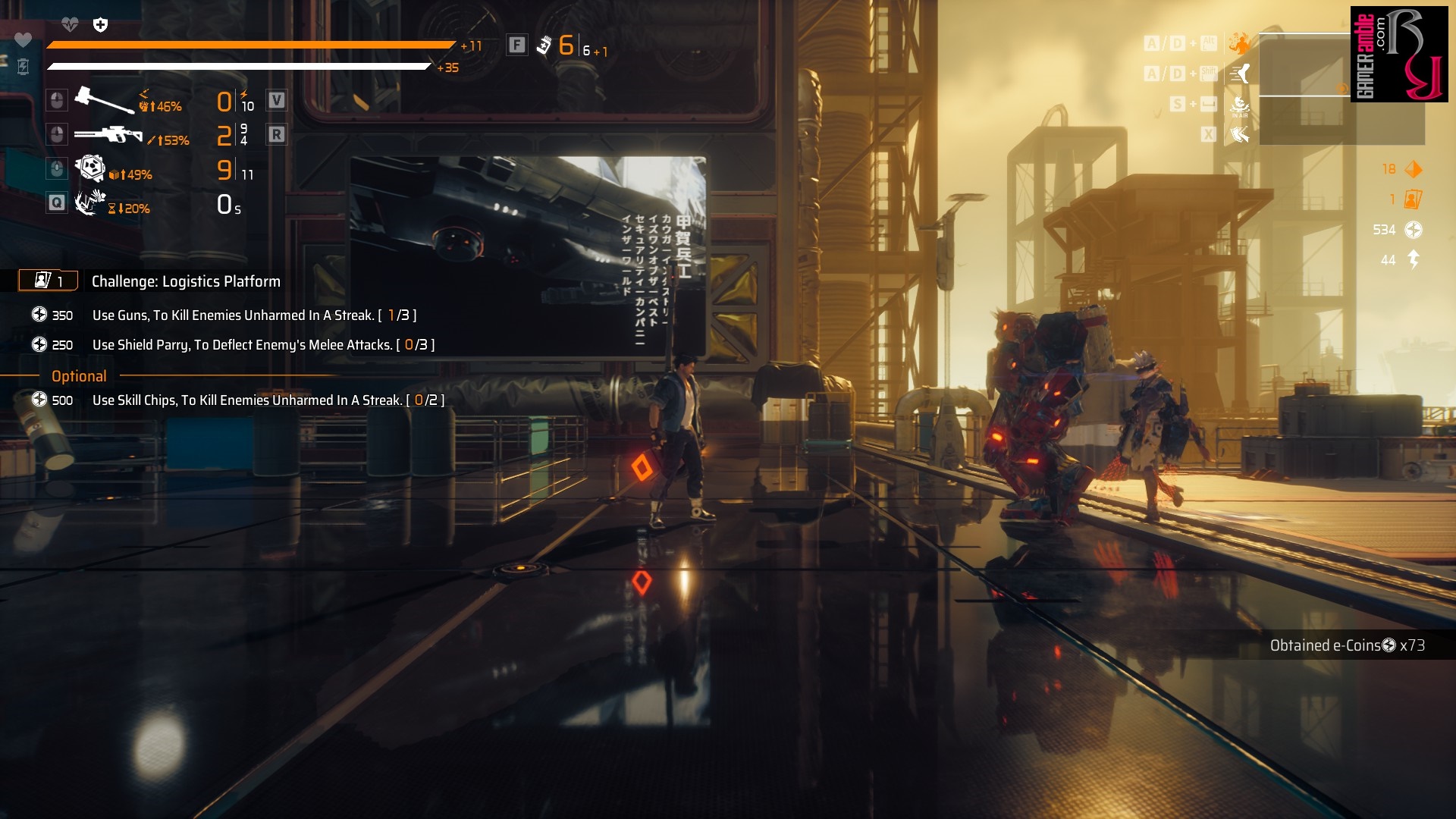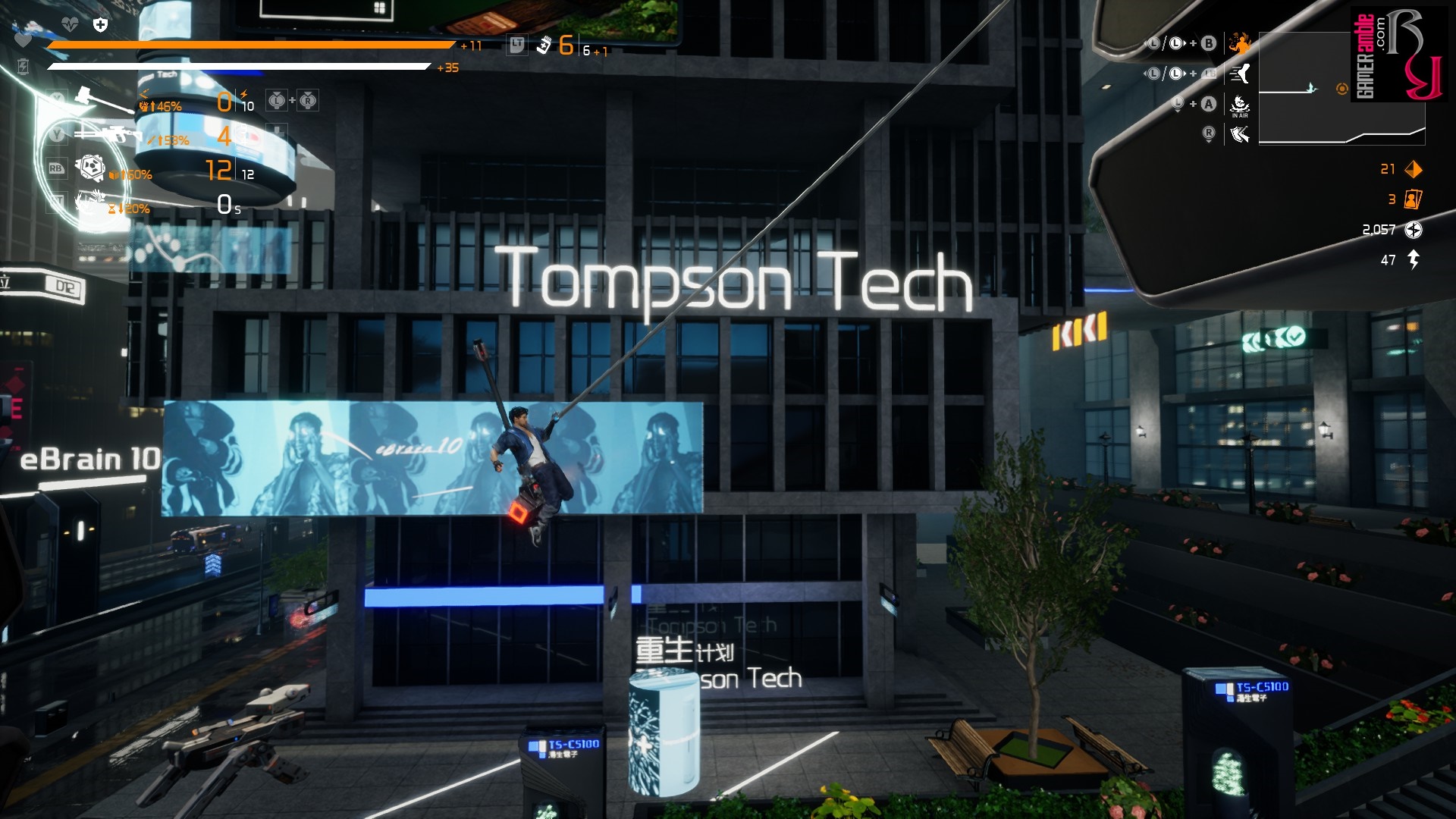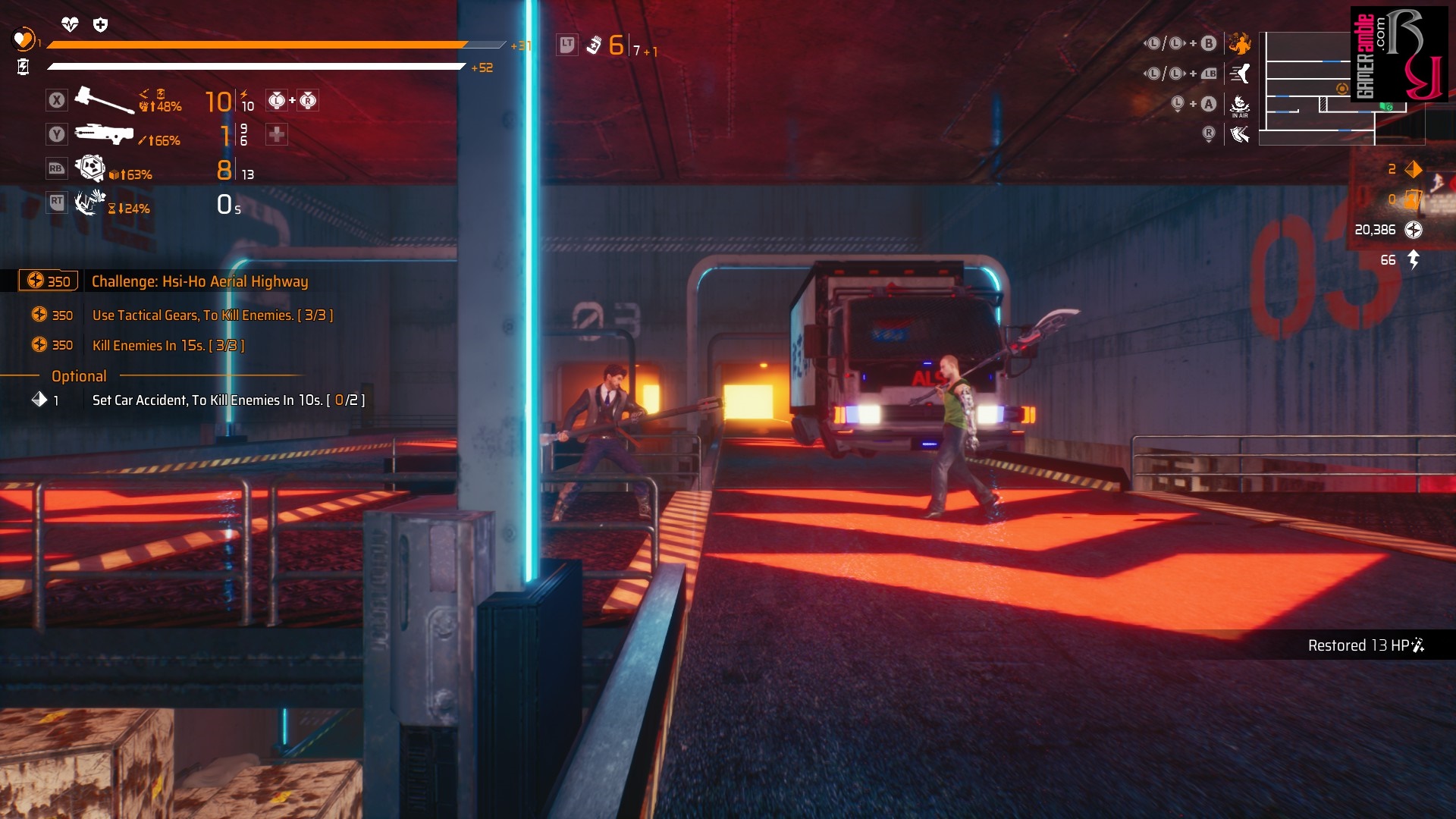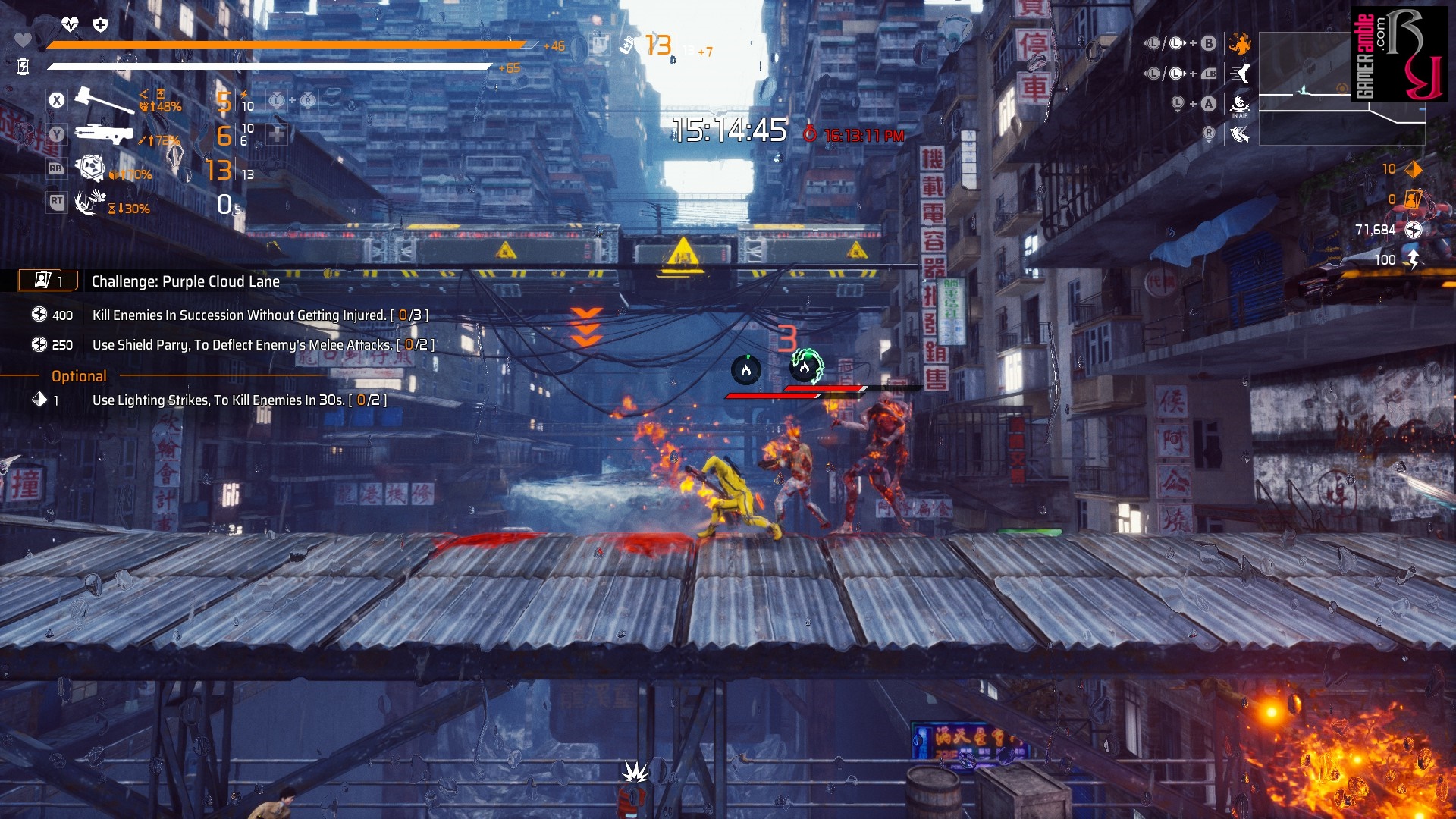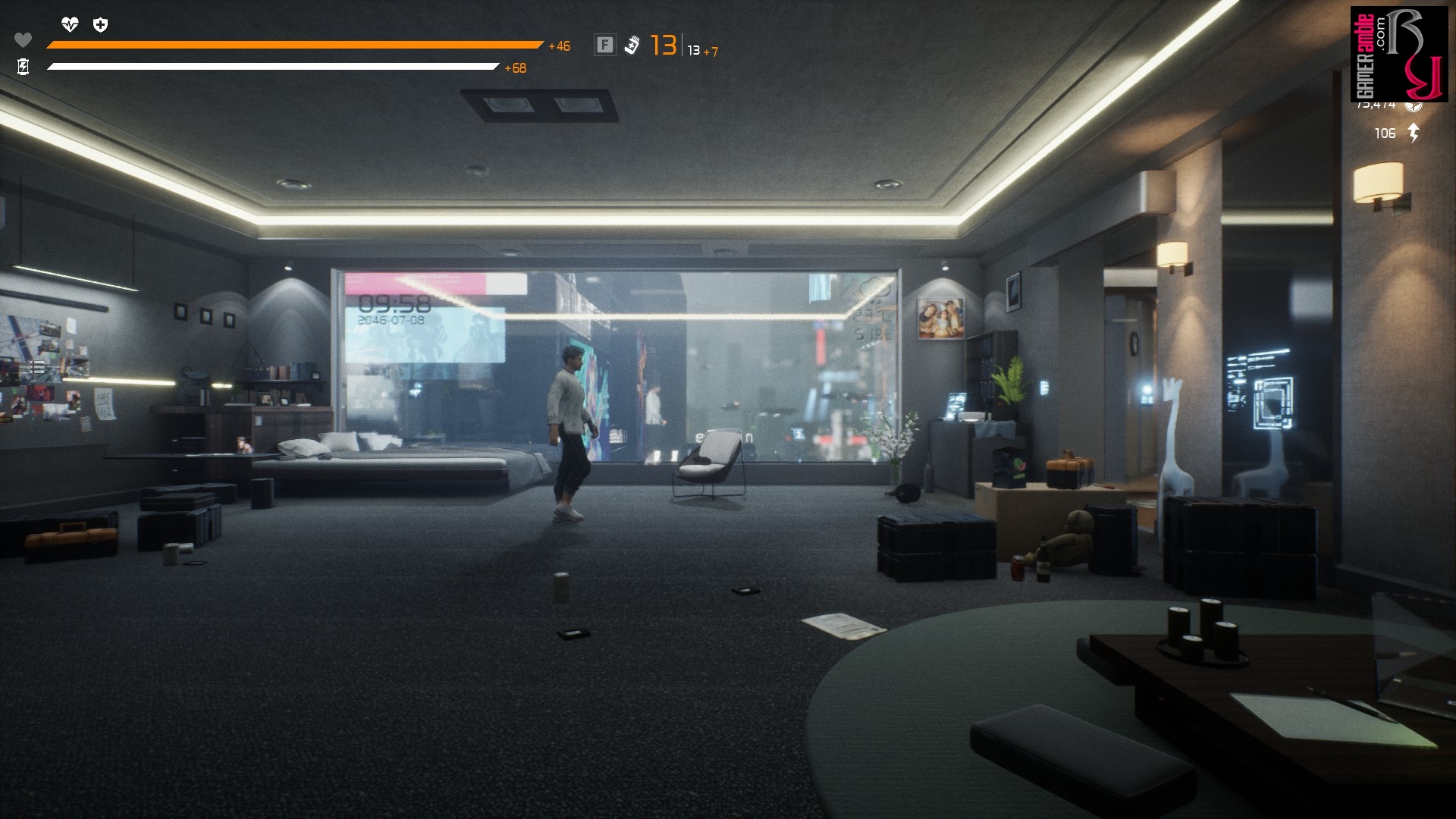Loopmancer
Developer: eBrain Studio | Publisher: Xu | Release Date: 2022 | Genre: Platformer / Roguelite / Indie | Website: N/A | Purchase: Steam
In the year 2046, Detective Xiang Zixu is killed while investigating the disappearance of a journalist. It is a tragic end for a man who only six months earlier lost his daughter in a car crash that also crippled his wife and cost him his arm. Loopmancer opens with players taking control of Xiang Zixu on the day of his death, but something strange happens after he is killed. Instead of dying, Xiang wakes up in his apartment with a colleague from the agency calling him about a new case involving a missing journalist. As this pattern repeats, Xiang realizes that he is stuck in some type of loop and doomed to forever repeat the same day after dying unless he can figure out what is going on and put a stop to it.
Repeated loops are nothing new in the rogue-lite genre, but the dystopian cyberpunk setting and the heavy focus on narrative make Loopmancer a unique entry. The game features seven large levels, but the odds of players seeing everything on their first few runs are very slim. Instead, the focus is on unlocking and upgrading new weapons that can help to make subsequent runs a little easier. Each time Xiang dies, he loses his cash and equipment as well as temporary upgrades granted by buff bots, but some elements persist. These include upgrade cores that can be spent on a skill tree for Xiang as well as any weapons and their upgrades that were unlocked. The result is that with each run, players are a little more prepared for the challenge ahead and a little more knowledgeable about what to expect.
When Xiang is not busy decimating gangsters, ninjas, or mutants, there’s also some platforming and puzzle solving to be done. Unfortunately, the puzzles tend to be very basic and involve locked doors and corresponding switches or pressure plates. In addition, some aspects of the levels will change in each loop to keep players on their toes. These changes are not as drastic as rogue-lites with procedurally generated levels, but they add some variety to the game.
From a gameplay perspective, Loopmancer is a 2D side-scrolling platformer with some hack and slash combat thrown in for good measure. Xiang is able to equip one melee weapon, one firearm along with tactical gear, and a skill chip for his cybernetic arm. These can all be upgraded with in-game currency and swapped out for other items in the same category once found and unlocked. The game has a large assortment of each weapon or equipment type, and even after repeated loops, we were finding new ones to try out. Some of them are serious weapons, while others, like the fish melee weapon and brick tech item, tend to be a little more humorous. For the best results, players must mix and match their weapons and abilities during combat. Guns can do serious damage but have limited ammunition that can only be refilled at designated supply caches. Skill chips can be used repeatedly but have a long cool-down period, while tech gear can only be used a certain number of times. This means that the majority of combat will be melee based, which is fine as bashing enemies around with everything from katanas and axes to bare fists is immensely satisfying.
Deeper into the game, players get to choose which level to tackle next at some points, and some choices might even lead to having to complete a level within a strict time limit. These choices and others during the game will then determine which one of the seven different endings players receive, provided they manage to make it through the loop successfully. Many of these are quite bleak or shocking, so don’t expect too many happy endings. However, the upshot is that if players manage to survive it through a complete loop, they get to keep everything, including the buff bot upgrades.
Visually, Loopmancer looks great, especially with all the settings cranked to the max. The game shows that Unreal Engine 4 can still impress, and the rain-swept, neon-lit streets of Dragon City would look right at home in a Blade Runner movie. There’s also an abundance of reflective surfaces to add to the game’s visual appeal and plenty of great background details. However, Xiang doesn’t spend all of his time beating up thugs in back alleys as he also gets to explore a rural village, luxury hotel, maritime training base, and the headquarters of a biotech company, to name a few. Everything looks great, but characters tend to look somewhat like action figures during cut-scenes when the camera zooms in closer.
The audio in Loopmancer fares slightly worse, with the exception of a few memorable music tracks. The sound effects are good, but the voice acting is very stiff and unnatural. Since the game is very story-rich, there’s plenty of dialogue in cut-scenes, but thankfully these can be skipped as a lot of it is exactly the same with each run. Some type of indicator to show when cut–scenes or dialogue will feature anything new would have been nice, though. A few times, we skipped something we thought we’d already seen in a previous run, only to receive an achievement indicating that the story deviated in some way. A final gripe about the cut-scenes is that the dialogue of some characters sounds much louder than others in the same conversation, which is very jarring. It doesn’t happen very often, but it is extremely noticeable when it does. During combat, the game features plenty of swearing from enemies and even the occasional “Wilhelm scream” tossed in for good measure. Some players will find this amusing, while for others, it will be immersion-breaking.
Along with melee and ranged attacks, Xiang is capable of dodging, grappling to higher areas, and wall jumping, so playing with a controller is highly recommended. After hitting enemies enough, an “Overkill” move also becomes available, which can cut through a row of foes easily if pulled off successfully. Other abilities, such as being able to parry melee attacks or deflecting ranged attacks, also become available with the right upgrades. Xiang can also sprint but has a stamina bar to keep an eye on. Overall, the combat in Loopmancer is delightfully visceral, with blood spraying everywhere and enemies ragdolling all over the place after a particularly vicious attack. In addition, levels tend to be littered with traps, such as mines, exploding barrels, and tripwires that can either hinder Xiang or be used against enemies by skilled players. Despite the large weapons arsenal, we found ourselves sticking to some favorites for each run as certain items are clearly more useful than others.
Rogue-lites, by their very nature, can become repetitive, but we found ourselves enjoying each loop in Loopmancer. The inclusion of challenges, which reward players with mementos and upgrade cores, is also a nice addition. These pop up in each new area Xiang enters and range from killing a certain number of enemies with specific weapons to chaining together kills in a certain amount of time without getting hurt. Loopmancer is also filled to the brim with notes and lore that players can find and read if they want to learn more about the game world and its inhabitants.
Overall, Loopmancer doesn’t add anything drastically new to the genre and the dialogue-rich story is somewhat at odds with the rogue-lite mechanics. However, we still found ourselves enjoying the game a lot. Since its release, the developers have also updated the game a few times to balance the difficulty more, making it much easier to complete. The story is somewhat generic and filled with cliches, but the addictive gameplay loop kept us coming back for more until we’ve unlocked all the endings. Although they are worlds apart in terms of themes and visuals, Loopmancer shares many similarities with GetsuFumaDen: Undying Moon, which was released earlier this year. While we still prefer the former, Loopmancer definitely delivers in style and substance. It’s by no means perfect but has enough difficulty settings to make it a challenge for fans of the genre as well as a good entry point for newcomers.
System Requirements
- Requires a 64-bit processor and operating system
- OS: Windows 7 64-bit
- Processor: Intel Core i5-3470/ AMD FX-8310
- Memory: 8 GB RAM
- Graphics: NVIDIA GTX 660 / Radeon R7 265
- DirectX: Version 11
- Storage: 15 GB available space
- Requires a 64-bit processor and operating system
- OS: Windows 10 64-bit
- Processor: Intel Core i7-4770S / AMD FX-9590
- Memory: 8 GB RAM
- Graphics: NVIDIA GTX 1060 / Radeon R9 390X
- DirectX: Version 12
- Storage: 15 GB available space


